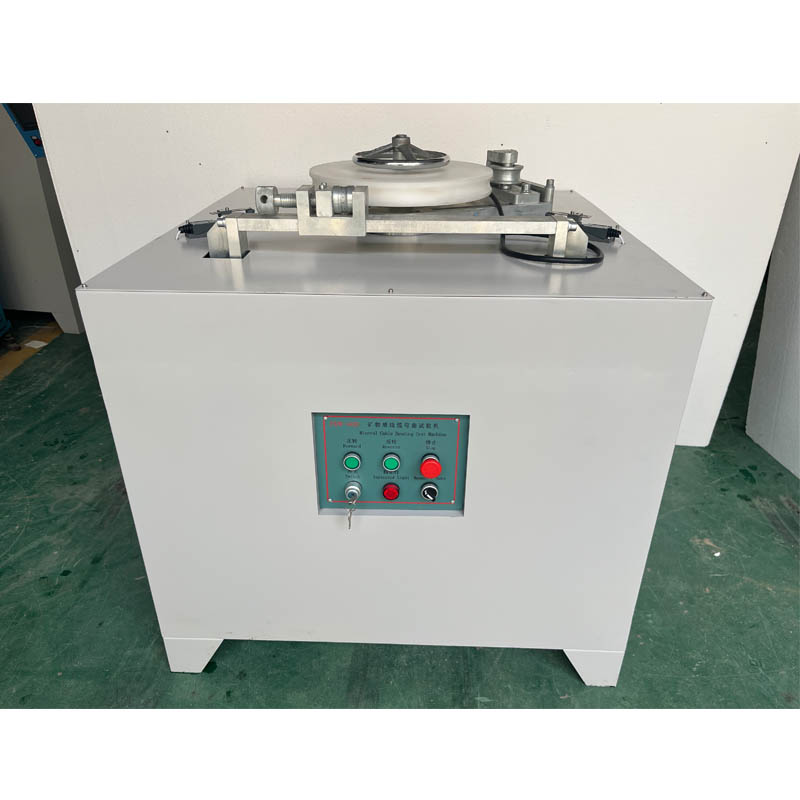copper and steel resistance tester
Understanding Copper and Steel Resistance Testers A Comprehensive Guide
In the realm of electrical engineering and industrial applications, the efficiency of conductive materials plays a vital role. Copper and steel are two of the most commonly used conductive materials, each with unique properties that lend themselves to specific applications. To ensure these materials perform optimally, it's essential to test their electrical resistance using specialized equipment known as resistance testers. This article explores the significance of copper and steel resistance testers, how they work, their applications, and the factors influencing accuracy.
The Importance of Resistance Testing
Electrical resistance is a measure of how strongly a material opposes the flow of electric current. This characteristic is critical in determining the effectiveness of conductive materials in electrical circuits, motors, and various components. High-resistance materials can result in energy loss, overheating, and reduced operational efficiency. Regularly testing the resistance of copper and steel components helps in identifying wear, corrosion, and other factors that might affect performance.
Types of Resistance Testers
Resistance testers vary in complexity and measurement capabilities. The basic models may simply provide resistance in ohms, while advanced testers offer features such as data logging, temperature compensation, and analysis capabilities. There are two primary types of resistance testers
1. Four-Wire Resistance Testers Also known as Kelvin testers, these are used for measuring low resistances with high accuracy. They employ four test leads—two for supplying the current and two for measuring the voltage drop across the test material. This method minimizes the impact of lead and contact resistance, providing accurate resistance readings, which is particularly crucial when testing copper and steel connections.
2. Micro-ohmmeters These specialized devices measure very low resistances (in micro-ohms), making them ideal for testing conductive materials in applications such as power systems and large electrical machinery. Micro-ohmmeters are essential in assessing connections in power cables, busbars, and other critical components where even the smallest resistance can lead to performance issues.
How Resistance Testers Work
Resistance testers operate on Ohm's Law, which states that the resistance (R) is equal to the voltage (V) divided by the current (I) flowing through a circuit R = V/I. The tester sends a known current through the material and measures the resulting voltage drop. This data is then used to calculate the resistance of the material.
For copper and steel, factors such as temperature, material composition, and surface condition can significantly influence resistance measurements. Thus, many modern testers are equipped with features that compensate for these factors to ensure accurate readings.
Applications of Copper and Steel Resistance Testers
copper and steel resistance tester

Resistance testers have a wide range of applications across various industries
1. Electrical Power Systems In electrical power generation, transmission, and distribution, maintaining low resistance in connections and conductors is crucial for safety and efficiency. Resistance testers are used to evaluate connections in substations, switchgear, and transformers.
2. Manufacturing In the manufacturing sector, resistance testing is integral to quality control. Components are tested for resistance to ensure they meet specified standards before being deployed in products.
3. Maintenance and Inspection Regular testing of installed equipment helps in predictive maintenance, identifying potential issues before they result in costly downtime. Whether it’s motors, generators, or even rail tracks, resistance testers ensure that connections remain secure and functional.
4. Research and Development Engineers and researchers utilize resistance testers to evaluate new materials and designs, comparing their performance against established benchmarks.
Factors Influencing Resistance Measurements
While resistance testers are designed to provide accurate readings, several factors can introduce variability
- Temperature As temperature increases, the resistance of metal conductors typically increases. Testers may need to accommodate for these variations to provide reliable data.
- Surface Oxidation The condition of the surface where the measurement is taken can affect readings. Oxidation on copper and steel surfaces can increase resistance, necessitating proper cleaning before testing.
- Test Frequencies Different frequencies can affect resistance readings, particularly in AC applications. Understanding the context of how the tester is used is vital for interpretation accuracy.
Conclusion
In summary, copper and steel resistance testers are indispensable tools in modern engineering and industrial applications. They ensure that electrical systems remain efficient, safe, and reliable. Regular resistance testing provides insights into the health of conductors and connections, paving the way for improved maintenance practices and system longevity. As technology advances, so too will the capabilities and accuracy of resistance testers, enabling better performance and greater efficiency in the use of conductive materials.
-
QNJ-2/3 Cable Flexibility Test Machine: Precision & Durability
NewsAug.31,2025
-
DQ-F Superfine Wire Conductor Resistance Fixture: High-Precision Testing
NewsAug.30,2025
-
ZC36 High Insulation Resistance: Reliable & Safe Performance
NewsAug.29,2025
-
CX-100 Manual Hydraulic Core Punching Machine - Efficient & Reliable
NewsAug.28,2025
-
Reliable Performance Testing with Advanced Aging Chamber Solutions
NewsAug.23,2025
-
Advancing Precision with Profile Projector Technology
NewsAug.23,2025
 Copyright © 2025 Hebei Fangyuan Instrument & Equipment Co.,Ltd. All Rights Reserved. Sitemap | Privacy Policy
Copyright © 2025 Hebei Fangyuan Instrument & Equipment Co.,Ltd. All Rights Reserved. Sitemap | Privacy Policy

